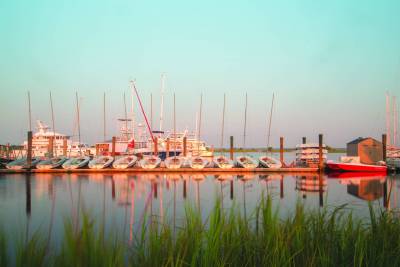
The new year brings with it new coastal boating laws. House Bill 201, passed by the 2019 Georgia legislature and signed by Gov. Brian Kemp, became effective Jan. 1, 2020.
The new law mainly affects waste discharge from vessels with marine sanitation devices (MSDs) and overnight anchoring in coastal waters.
Also during the 2019 session, the legislature passed groundbreaking shellfish laws which, when fully implemented, will enable the state to develop an oyster industry similar to surrounding states.
“Maintaining good water quality by minimizing waste discharged into estuaries is fundamental to a successful oyster industry,” explained Doug Haymans, director of the Coastal Resources Division (CRD) of the Georgia Department of Natural Resources (DNR).
“Waste, whether chemically treated or not, can be harmful to sensitive marine environments such as Georgia salt marshes,” Haymans said. “The U.S. Environmental Protection Agency (USEPA) recognizes such, and through the Clean Water Act, allows states to regulate the use of MSDs on houseboats, or as defined in this bill, ‘liveaboards.’ Short of the USEPA creating No-Discharge Zones in coastal Georgia, the state chose to regulate the discharge of all waste from liveaboard vessels, whether treated or untreated, from any Type I, II, or III MSDs.”
The boating law and shellfish law are bound together by water quality. Vessel owners with MSDs are now required to secure the device in such a manner that they can only be pumped out. There are 19 sanitary pump-out stations along Georgia’s coast. A map of coastal Georgia’s pump-out stations is available at https://coastalgadnr.org/Pumpout.
Examples of proper securing of MSDs include closing the seacock and padlocking it, using non-releasable wire ties or removing the seacock handle with the seacock in the locked position. Vessel owners may also choose to dump their holding tanks three or more miles from Georgia’s shoreline.
H.B. 201 also authorizes DNR to establish where overnight anchoring may occur. On Dec. 30, 2019, DNR Commissioner Mark Williams signed an Administrative Order (AO) establishing restrictions in some sensitive areas.
The AO restricts overnight anchoring within 1,000 feet of marked shellfish beds, whether commercial leases or public-picking areas.
“The idea is to protect submerged oyster gear from anchor entanglement and to reduce the likelihood of waste being accidentally discharged near the oyster beds, again tying the two new laws together,” Haymans said.
The AO also restricts overnight anchoring within 1,000 feet of any structure, such as public and private docks, wharfs, bridges, piers and pilings, except in areas near marinas. Commissioner Williams has created “marina zones,” which allow boaters to anchor as close as 300 feet to marinas or facilities that provide fuel, dinghy access, provisions, vessel maintenance or other services, regardless of whether other structures exist nearby. Boaters may anchor overnight within these marina zones. It should be noted that the 1,000-foot exclusion zone applies to the vessel’s swing circle.
This law change, and the associated administrative order, is not intended to restrict or impact boaters engaged in fishing and other recreational activities in Coastal Georgia. The intent of the change and enforcement will be to prohibit overnight anchoring in locations that could degrade shellfish production, cause navigation hazards, or create conflicts between waterfront homeowners and the boating public.
“We want everyone to know that Georgia’s coastline is open to all boaters while we work to provide clean, quality resources for everyone to enjoy,” Haymans said.


Bulloch Public Safety
11/24/2025 Booking Report for Bulloch County

Bulloch Public Safety
12/12/2025 Booking Report for Bulloch County

Bulloch Public Safety
12/01/2025 Booking Report for Bulloch County

Bulloch Public Safety
12/16/2025 Booking Report for Bulloch County

Bulloch Public Safety
12/15/2025 Booking Report for Bulloch County









